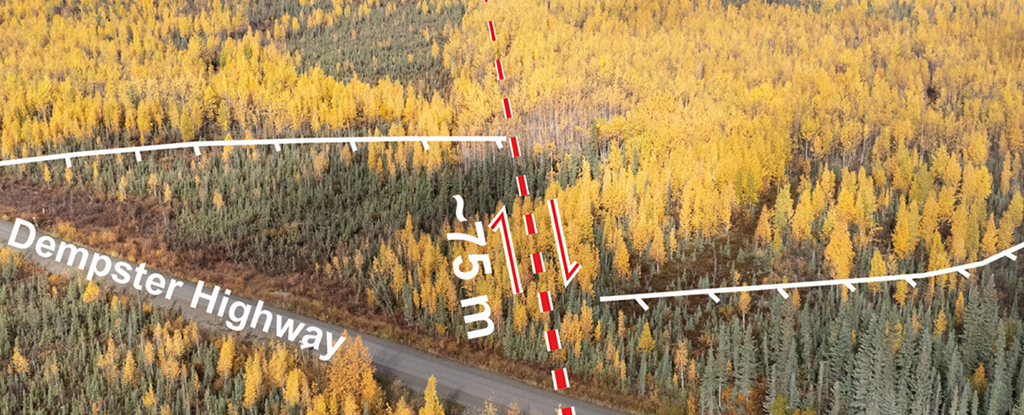The Tintina fault stretches 1,000 kilometers (621 miles) across northern Canada, crossing the Yukon and ending in Alaska. The fault is thought to have been dormant for 40 million years, but that thinking is challenged by a new study that suggests a major earthquake may be imminent.
Researchers from the University of Victoria and the University of Alberta in Canada have spotted signs of two relatively recent groups of earthquakes that significantly shifted the ground: one 2.6 million years ago and one 132,000 years ago.
What’s more, the team found no evidence of notable earthquakes within the last 12,000 years. That quiet period could actually a warning; based on calculations that the fault is shifting and building up pressure at the rate of 0.2-0.8 millimeters (0.008-0.03 inches) per year, it means a major quake may be imminent.
Related: Terrifying Video Shows Earth Cracking And Sliding During Myanmar Quake
“Over the past couple of decades there have been a few small earthquakes of magnitude 3 to 4 detected along the Tintina fault, but nothing to suggest it is capable of large ruptures,” says geologist Theron Finley from the University of Victoria.
“The expanding availability of high-resolution data prompted us to re-examine the fault, looking for evidence of prehistoric earthquakes in the landscape.”
Using a combination of the latest high-resolution satellite imagery and LIDAR (Light Detection and Ranging) technology – measuring laser light reflections to assess terrain levels – the team carried out a fresh look at the Tintina fault.
This close analysis helped reveal narrow surface ruptures that are usually well concealed by Canada’s forested wilderness. This turned up fault scarps (offsets in the ground surface called ‘slips’) pointing to past earthquakes, but nothing in the recent geological past.
Based on the calculations of the researchers, the fault should have slipped around 6 meters (nearly 20 feet) in that time, but hasn’t. When that pressure is eventually released, it could mean an earthquake of a magnitude more than 7.5 on the Richter scale.
“The Tintina fault therefore represents an important, previously unrecognized, seismic hazard to the region,” write the researchers in their published paper.
“If 12,000 years or more have elapsed since the last major earthquake, the fault may be at an advanced stage of strain accumulation.”
This isn’t the most populated part of the world, but lives are still in danger – including in nearby Dawson City, home to 1,600 people. Damage to infrastructure and ecosystems also needs to be considered.
The researchers want to see further studies of the Tintina fault – and other faults like it – to better figure out the chances of it triggering an earthquake in the future. The more data experts have about historical seismic activity in the area, the better the computer models will be at predicting future events.
“Further paleoseismic investigations are required to determine the recurrence intervals between past earthquakes, and whether slip rates have changed through time due to shifts in tectonic regime, or glacial isostatic adjustment,” write the researchers.
The research has been published in Geophysical Research Letters.
